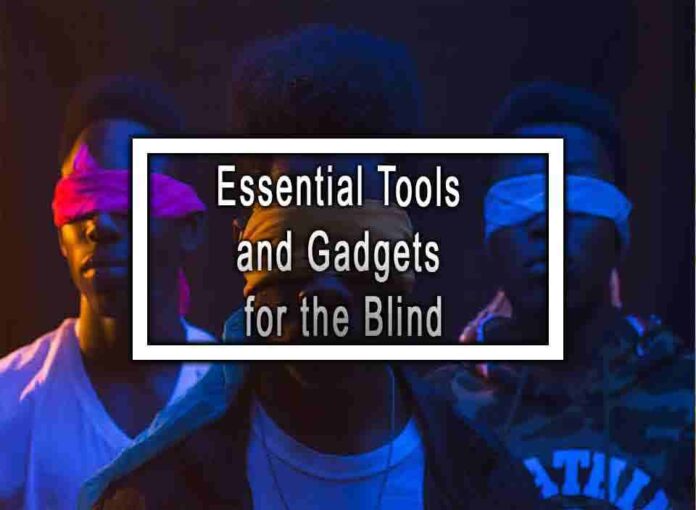There are numerous tools and gadgets designed to assist individuals who are blind or visually impaired in various aspects of daily life, promoting independence and accessibility. Here are some essential tools and gadgets for the blind:
Screen Readers:
- Screen readers are software programs that convert on-screen text into speech or braille output. They enable blind users to access and navigate computer interfaces, websites, and digital content.

Braille Displays:
- Braille displays are tactile devices that convert digital text into braille characters. They provide a way for blind individuals to read and interact with electronic content.
Voice Assistants:
- Voice assistants like Amazon Echo and Google Home can help with tasks such as setting alarms, sending messages, checking the weather, and controlling smart home devices through voice commands.
Braille Note-Takers:
- Braille note-takers are portable devices that allow users to take notes, read documents, and access digital content in braille. They often come with built-in braille displays and notetaking capabilities.
Mobility Aids:
- White canes and guide dogs are essential for safe navigation. Canes help individuals detect obstacles, and guide dogs offer trained assistance in mobility.
Accessible Cell Phones and Apps:
- Many smartphones have accessibility features, including screen readers, voice commands, and magnification options. There are also apps designed specifically for navigation, reading, and other tasks.
Talking Watches and Clocks:
- These devices announce the time audibly, allowing blind individuals to keep track of time independently.
Accessible Thermometers and Gauges:
- Talking thermometers, scales, and other measuring devices provide audible feedback for temperature, weight, and other measurements.
Electronic Braille Books and Displays:
- Electronic braille books and displays enable blind users to read books, documents, and other content in braille format.
Remember that the specific tools and gadgets needed may vary based on an individual’s preferences, needs, and level of visual impairment. It’s essential to consult with a rehabilitation specialist or vision professional to determine the most suitable tools and technologies for each person’s unique situation.











